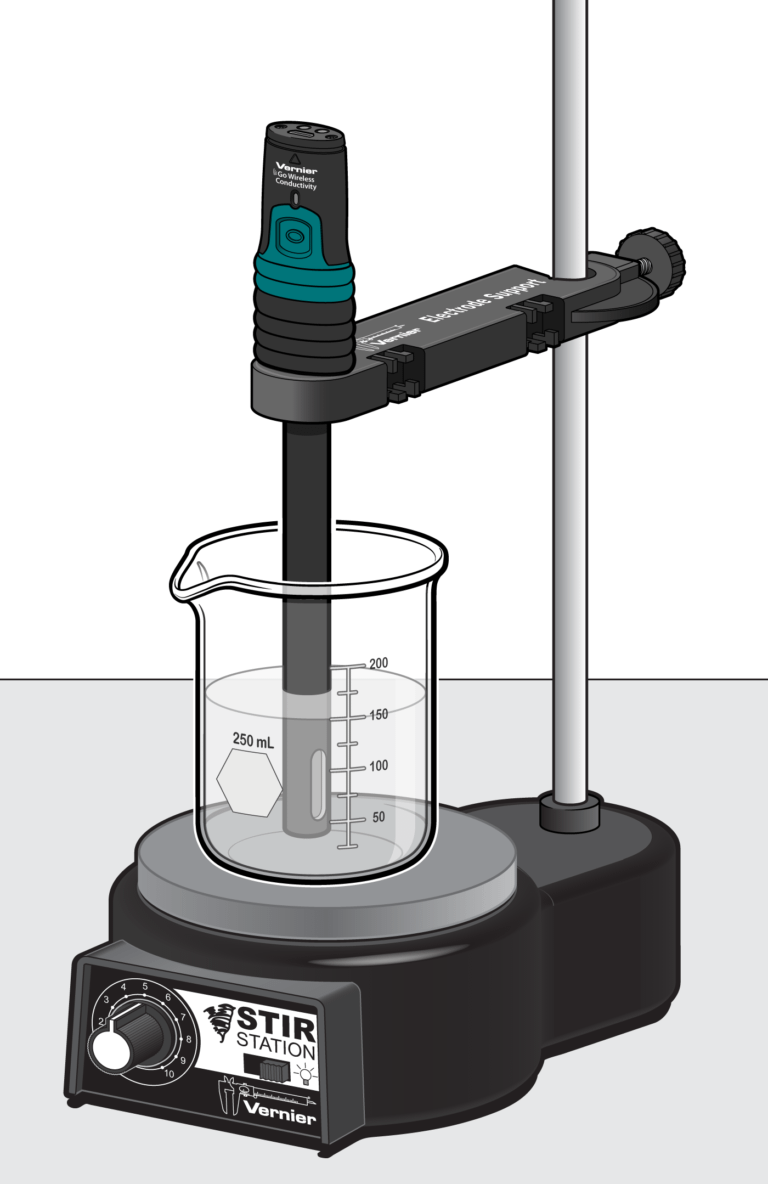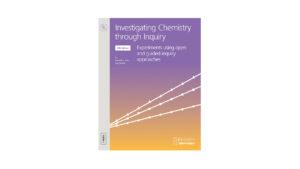Conductivity of Aqueous Solutions
Experiment #4 from Investigating Chemistry through Inquiry
- Subject
- Chemistry

Introduction
In this experiment, you will investigate some properties of strong electrolytes, weak electrolytes, and nonelectrolytes by observing the behavior of these substances in aqueous solution. You will investigate these properties using a Conductivity Probe. When the probe is placed in a solution that contains ions, and thus has the ability to conduct electricity, an electrical circuit is completed across the electrodes that are located on either side of the hole near the bottom of the probe body, and this produces a conductivity reading. The unit of conductivity used in this experiment is the microsiemens per centimeter, or µS/cm.
Objectives
In the Preliminary Activity, you will gain experience using a Conductivity Probe and data- collection software. You will first measure the conductivity of distilled water, and then, after adding NaCl solid to the distilled water, you will measure the conductivity of the resulting NaCl solution.
After completing the Preliminary Activity, you will first use reference sources to find out more about electrolytes and the electrical properties of aqueous solutions before you choose and investigate a researchable question dealing with the conductivity of aqueous solutions.
Sensors and Equipment
This experiment features the following sensors and equipment. Additional equipment may be required.
Option 1

Option 2

Ready to Experiment?
Ask an Expert
Get answers to your questions about how to teach this experiment with our support team.
- Call toll-free: 888-837-6437
- Chat with Us
- Email support@vernier.com
Purchase the Lab Book
This experiment is #4 of Investigating Chemistry through Inquiry. The experiment in the book includes student instructions as well as instructor information for set up, helpful hints, and sample graphs and data.

